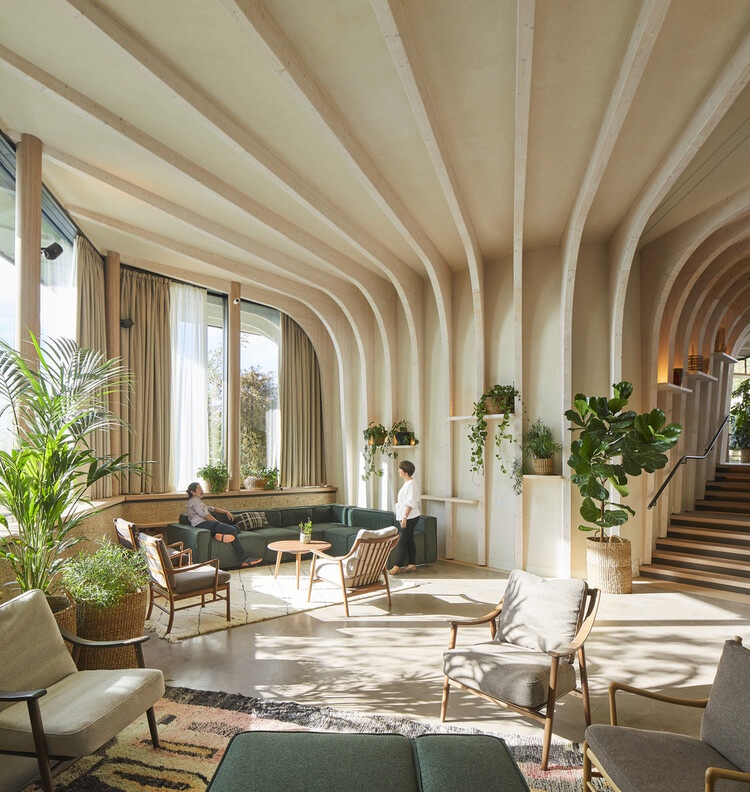In the ever-evolving landscape of the corporate world, the design of a workspace is not just about aesthetics; it's a critical factor in fostering productivity and success. Corporate interior design goes beyond mere decoration; it shapes the environment where ideas are born and goals are achieved. This exploration into corporate interior design delves into how well-thought-out spaces can significantly influence productivity and, ultimately, the success of a business.
The Power of Design in Setting the Stage for Productivity
The first and foremost aspect of corporate interior design is understanding its impact on employees' productivity. A well-designed office is not just a place to work; it's a space that motivates, inspires, and supports the people who use it. The layout, lighting, furniture, and even color schemes play substantial roles in influencing mood, energy levels, and concentration.
Optimizing Space for Functionality and Flow
One of the key elements of productive corporate interior design is the intelligent use of space. Open-plan offices, private workstations, collaborative spaces, and leisure areas should be balanced to cater to different work styles and needs. A well-designed office layout facilitates a smooth flow of people and ideas, reducing unnecessary disruptions and promoting efficient work practices.
Ergonomics: Comfort Meets Productivity
Ergonomics is an essential consideration in corporate interior design. Furniture and workstations that provide comfort and reduce strain significantly impact employee well-being and productivity. Ergonomically designed chairs, adjustable desks, and thoughtfully positioned computer screens can reduce fatigue and prevent health issues, leading to more focused and efficient employees.
Lighting: The Underrated Game-Changer
Lighting in a corporate environment is more than just a necessity; it's a strategic tool in enhancing productivity. Natural light is a coveted element, known for boosting mood and energy levels. In spaces where natural light is limited, incorporating quality artificial lighting that mimics daylight can help maintain alertness and reduce eye strain. Additionally, adjustable lighting can cater to various tasks and preferences, creating an adaptable work environment.
Color Psychology in Corporate Spaces
Color is a powerful communicator in corporate interior design. Different colors can evoke different emotions and behaviors – blues and greens are calming and aid concentration, while yellows and reds can energize and stimulate creativity. Incorporating the right color palette into a corporate space can subconsciously influence the productivity and creativity of its inhabitants.
Incorporating Nature for Enhanced Well-being
Biophilic design, which integrates natural elements into the workspace, has been shown to reduce stress and improve cognitive function. Incorporating plants, water features, or even artwork depicting nature can create a more pleasant and productive environment. This connection to nature in a corporate setting not only enhances aesthetics but also promotes mental well-being.
Technology Integration for Efficiency
In today’s digital age, integrating technology into corporate interior design is indispensable. Smart offices with technology-driven solutions, such as automated climate control, advanced security systems, and wireless technology hubs, not only streamline work processes but also create an environment that supports productivity and innovation.
Flexibility and Adaptability
Modern corporate interior design embraces flexibility. Modular furniture, movable partitions, and adaptable lighting systems allow spaces to be reconfigured according to changing needs. This adaptability ensures that the workspace can evolve with the company, continually supporting its productivity and growth.
The Impact of Corporate Identity in Design
Corporate interior design also plays a vital role in reflecting the company's identity and values. A workspace that aligns with the brand’s image and culture can instill a sense of pride and belonging among employees, translating into higher motivation and productivity.
Conclusion
Corporate interior design is a critical player in the narrative of a company's success. It’s about creating environments that inspire, motivate, and support the people within them. Through strategic design choices—from ergonomics to aesthetics—a well-designed corporate space can significantly boost productivity and foster a culture of success and innovation. As companies continue to recognize the importance of their physical workspace, the role of corporate interior design in shaping productive environments becomes increasingly paramount.
Top of Form


No comments yet